Everyone Should Explore Martial Arts, Even During COVID
Photo by SOON SANTOS on Unsplash
“I could never get into martial arts–I’m too old/uncoordinated/pacifistic/pressed for time…” Most martial artists who encourage others to get involved hear these claims. Though understandable, they are untrue, and the thoughts below may encourage you, your family, or friends to try martial arts (most schools offer free trial classes).
Yes, many are closed during the current lock-down, but schools usually have decent websites and Google offers a trove of martial arts resources. Now is an ideal time to look into local offerings to decide what types of arts to try as schools reopen in the months to come.
Intense workouts and competition, or just stretching in the park?
Not all martial arts are aggressively physical, demanding full-contact sparring. With the dramatic growth of Mixed Martial Arts (MMA) and Brazilian Jujitsu (BJJ), it’s easy to believe that martial arts mainly attract young people who train strenuously for painful, sometimes bloody bouts where they are punched, kicked, and choked. Televised MMA has popularized the sporting side of martial arts, concentrating as it does on violent, visually engrossing competition.
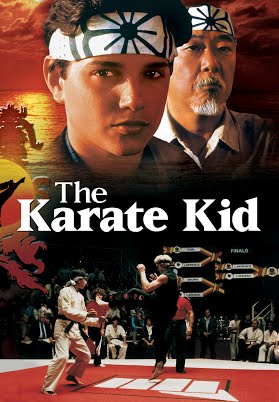
But this image is not typical of martial arts. And–contrary to stereotypes in Karate Kid and similar movies–it is also not typical for martial art instructors to be gentle, tiny but inexplicably powerful older men with beards. Instructors come in all sizes, races, shapes, ages, and genders; and the arts themselves are just as often geared to self-development and East Asian cultural immersion as to full-contact fighting. Some offer all of this.
For example, Tai Chi may conjure images of senior citizens doing stretching and breathing exercises in picturesque settings. This isn’t inaccurate, yet the art can also be pursued as a system of self-defense where practitioners learn to wield weapons including canes, staffs, and swords effectively.
Somewhere between MMA and Tai Chi exist many forms of popular Japanese, Korean, and Thai punching and kicking arts such as Karate, Tae Kwon Do, and Muay Thai. Some of their schools make competition mandatory; others don’t. Some arts demand intense physical conditioning; with others, you may not break a sweat during class. Most offer a balance: One Korean art I’ve studied for years is explicitly non-competitive, yet occasionally has students spar informally to provide the feel of an actual street fight. If overcoming fear of violence is a goal–most normal people have it–contact arts will help you dramatically. There’s nothing like getting punched, kicked, or choked full-force to make you realize that it’s not so bad, and definitely survivable with the right training.
Many Karate and Tae Kwon Do styles focus heavily on “forms,” in which students practice pre-arranged patterns of defensive and offensive movements. Repeating them hundreds of times imparts coordination, endurance, strength, and–its proponents maintain–sufficient muscle memory and fighting skill to defend yourself on the street.
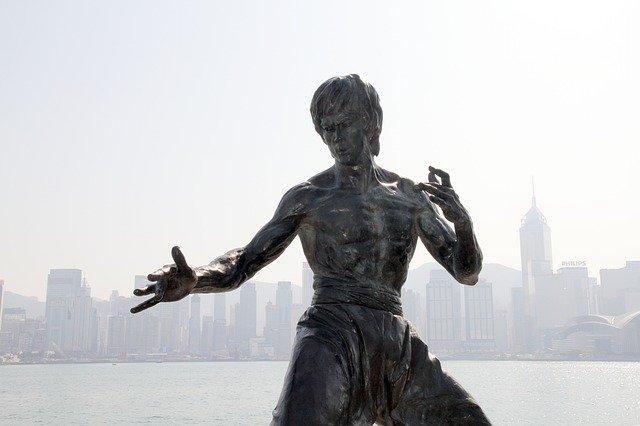
If you grew up watching Bruce Lee, Jean-Claude Van Damme, Chuck Norris, and Jackie Chan, you may conclude that most martial arts entail punching and kicking (known as “hard” arts). In the 1980s, movies began featuring artists–e.g., Steven Seagal–trained in “soft” arts such as Aikido, Hapkido, and traditional Jujitsu, which feature throwing, joint locks and breaks, choking, and pressure point manipulation…as well as occasional punches and kicks.
Fundamentally, in hard arts such as Karate, you defend yourself from aggressive, linear attacks (punches or kicks) by blocking them, then respond with your own punches or kicks. In soft arts such as Jujitsu, you also deflect strikes, but then unbalance your assailant or exploit his vulnerabilities so you can end the fight by throwing him to the ground, setting a painful joint lock, choking, or otherwise subduing him.
More recently, the Bourne and John Wick film series integrate hard and soft moves in their fight scenes. Of course, movie bouts are highly choreographed, and it takes some martial arts background to pick out legitimate techniques from flashy-yet-unrealistic acrobatics intended purely to entertain.
Self-defense (often, but sometimes not)
Not every martial art will help you defend yourself well in a fight; many arts claiming to do so have been found wanting on the street. As noted, Karate and Tae Kwon Do concentrate on punching and kicking, yet many real fights end up with opponents grabbing each other and/or on the ground, where strikes can be much less effective than grappling, joint locks, nerve attacks, or chokes…techniques taught only in certain arts.
Even advanced practitioners of hard arts can be vulnerable when grabbed or forced to the ground. Not that such arts aren’t worthwhile, but adding grappling and ground-fighting techniques to typical Karate and Tae Kwon Do curricula will make them more well-rounded, and some schools do this.
If you’re interested solely in self-defense (with physical conditioning), you might consider systems such as Krav Maga, which was developed for the Israeli armed forces and is known for its ruthless efficiency. Some forms of Jujitsu teach defenses from all positions (or for those with disabilities) and use both hard and soft techniques. Ideally, you ought to read widely, observe classes, and question practitioners to determine if a given school offers what you want.
“Martial arts” versus “martial ways”
A sometimes murky distinction exists between “martial arts” and “martial ways.” The former emphasize technique (“art” suggests “technique” in many Asian languages rather than anything aesthetic)…how to prevail in a real struggle, originally on a battlefield and now on the street. Martial ways evolved from martial arts, yet aim primarily at personal or spiritual development (“way” implying “path”). “Martial sports” focus on competition and sometimes overlap with “martial ways” (e.g., Judo, Kendo, and Tae Kwon Do are sports and ways).
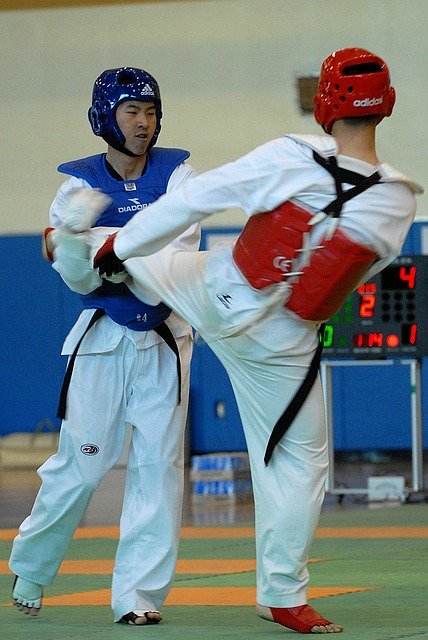
One martial art I study, Budoshin Jujitsu, derives many of its techniques from what a samurai would have done centuries ago if he’d been disarmed and had to fight an enemy who was wearing armor and often armed. Because punching and kicking are ineffective against armor, jujitsu evolved to favor throws, joint locks, nerve attacks, and choking. The roots of jujitsu extend back 2,500 years and were “cross-pollinated” in Japan via contact with arts from elsewhere in Asia.
By contrast, Judo is a martial way (and sport) that emerged from Jujitsu in the late 19th century. Note that both terms have the same first syllable (“Ju” means “yielding,” as in “yielding to an opponent’s force to use it against him”), yet Judo omits the most destructive, painful techniques of Jujitsu–joint breaking, eye gouging–so it can be practiced safely as a sport in which competitors unbalance and throw each other to win points. So in Japanese or Korean, if the name of a pursuit ends in “do” (Hapkido, Tae Kwon Do, Judo, Aikido, Iaido, Kyudo), it is a way rather than an art; if it ends otherwise (especially in “-jitsu,” as in “Jujitsu” or “Kenjitsu”), it’s likely a martial art.
Some practitioners of martial ways assert that their pursuits don’t give up any practical effectiveness of the “art” forms, or can be modified for use on the street. This is often heard from those who train in Judo or Brazilian Jujitsu (both sports) or Aikido (which focuses on spiritual development). These claims may be true; many schools add techniques to address weak points of their arts. If self-defense is a priority for you, just be sure to ask.
You will only find out by observing and talking to practitioners whether or not a school fits your personal goals, self-defensive or otherwise: “I see your classes focus on groundwork. Do you ever address what to do if attacked by more than one assailant on the street?” Or: “Those were impressive striking drills. But what if someone grabs you or takes you to the ground and you’re not in a position to punch them?”
As another example of the “art” to “way” transition, the classical Japanese art of Kenjitsu taught the use of real swords against real opponents. With the Meiji Restoration (1868), swords began to lose their battlefield usefulness, and the “art” of Kenjitsu developed into the “ways” of Kendo and Iaido. Kendo is a popular, worldwide sport where participants fence against each other using bamboo swords (shinai) while wearing armor (bogu). Kendo seeks to integrate character-building, intense physical training, and the excitement of competition.
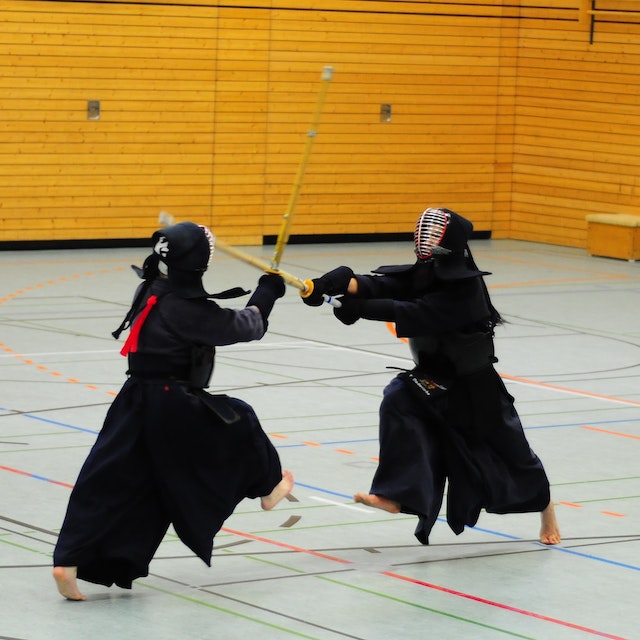
Iaido students learn to wield a weapon of ancient design (the katana or “samurai sword”) against imaginary opponents to enhance the student’s spiritual development, not actually cut down people. I became interested in Iaido because my Jujitsu instructor taught rudimentary swordsmanship to help us understand Jujitsu stances and techniques, which have been informed by sword work for over 1,000 years.
“Iaido” means literally “way of mental presence and immediate reaction.” Practitioners smoothly draw the sword from its scabbard to counter sudden attacks, cut or stab (imaginary) opponents, remove (imaginary) blood from the blade, then re-sheath the sword. The katana has iconic status in Japanese history, which Iaido acknowledges while cultivating inner harmony, endurance, and imagination that comes from having to conjure opponents “out of thin air” and respond convincingly to them.
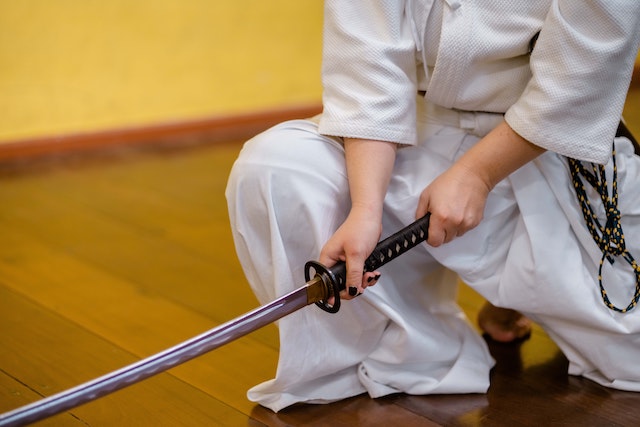
Places of integrity, often with ethical codes
Ever sense that qualities other than, say, ability and commitment are being considered when you’re up for a promotion at work? You may find that characteristics in which you take pride–e.g., integrity, generosity, loyalty–may be less relevant to employers than profitability and whether or not you add to it, or perhaps what your business connections offer. By contrast, your progress in martial arts usually takes into account “the whole you.”
Good martial arts schools offer far more than physical training; they encourage the ethical development of every committed student. For example, a Korean art I study, Han Guk Mu Sool, adheres to the code of Hwa Rang Do warriors of the 6th century, who believed in loyalty to country and parents; trust and brotherhood among friends; courage not to retreat from the enemy; and justice never to take a life without cause. The art holistically “offers a balance between empty-handed and weapons techniques, physical fitness, internal development, and mental training; practitioners learn to be at peace with themselves and others; personal refinement and character are developed by competing against oneself.” As in most martial arts, confidence develops over years of study and skills don’t need to be shown off…indeed, showing off is forbidden by reputable schools.
The name of the Jujitsu style I train in, Budoshin, means “respectable” or “chivalrous” in Japanese. Its code of conduct states that instructors should encourage “three values essential to a martial artist: integrity, humility and respect.” By exemplifying all three, practitioners serve as role models and recognize the responsibility that comes with knowing dangerous techniques. Because severe or fatal injuries are possible, students avoid physical confrontations on the street, and verbal or other methods of de-escalating conflicts are attempted before resorting to force. Ultimately, those proficient in Jujitsu have the choice of inflicting moderate, temporary pain or–if absolutely necessary–severe, incapacitating injury.
If most young people aspired to such standards, how much bullying and petty crime would take place in schools and elsewhere?
In our increasingly amoral age, where ethical guidelines are often not taken seriously, the value of studying a martial art with high behavioral expectations is clear. Given the contemptible conduct of too many politicians, clergy, celebrities, and sports stars, pursuing avocations with honorable codes may be needed more than ever.
Learn about ancient and modern weapons
The U.S. is a gun culture, but I know more than one anti-gun person who has enthusiastically taken up training in ancient weapons for their aesthetic qualities and spiritual benefits: swords, knives, and staffs of every size and shape, as well as spears, nunchucks, kamas, batons, canes…even chains, ropes, darts, halberds, and naginatas have a place in some martial arts schools.
Many arts also use a wide range of improvised weapons to complement their core unarmed training: common objects such as rolled-up magazines, pens, pencils, key chains, tools, kitchen utensils, and hard-backed books can be used offensively or defensively. The Korean art in which I train shows how to use knives and canes to defend ourselves, while we also work with swords and spears to enhance awareness of Korean martial history.
Japanese sword drawing (Iaido) has been called “moving Zen,” and while Japanese archery (Kyudo) also has no current military relevance, contemporary practitioners have recast it as “meditation in action.” As in Iaido, the goal of learning to shoot arrows is to promote a practitioner’s moral development and self-understanding. Though some pursue Kyudo as a sport, a more profound meditative end is sought by melding spirit and shooting technique, ideally reaching a heightened state of munen muso, “no thoughts and no illusions.”
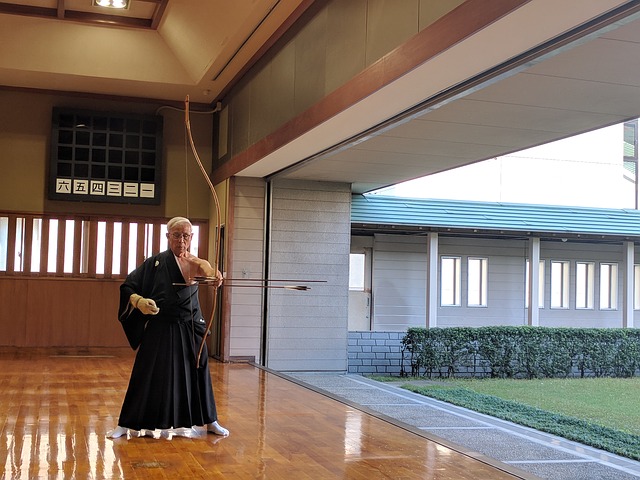
Often not injury-inducing
Over almost twenty years of training in three martial arts (two high-contact ones), the worst injury I’ve suffered is breaking my little toe by catching it on the edge of a mat. In full-contact arts, bruises or sprains aren’t unusual, but fractures are. Obviously, the more an art emphasizes head-to-head competition, the more likely you are to be injured. If you train in Tai Chi or with certain weapons, injuries are nearly unheard-of because you rarely contact another person. Your willingness to get hurt occasionally should, however, be a real consideration when choosing an art, and your age may influence whether you can handle breaking a limb or being inconvenienced by minor injuries.
Dealing with challenging people; “Verbal jujitsu”
Just as you had both superb and awful teachers in school, martial arts instructors vary widely in ability. You’ll find some masterly and inspiring, others inept and irritating. Training with the latter can be turned into a character-building experience, as we all must deal at some point with people we dislike. Having martial artists of higher rank order you around–especially if they’re younger and/or much less accomplished than you aside from their martial arts skills–can test your patience. Developing mental toughness and finding value in challenging interactions are benefits of long-term training.
(Relatedly, the “nerd factor” can be high in some arts. Quite a few practitioners are socially awkward and no doubt turned to martial arts because they didn’t care about–or, more likely, weren’t good at–“cool” or “popular” activities, and/or were bullied at school. Usually, the more obscure the art, the quirkier those who train in it. The machismo of Brazilian Jujitsu or Mixed Martial Arts generally appeals to a different demographic than the recondite spirituality of, say, Japanese archery.)
Coping with the mental/emotional challenges of martial arts pays off in many ways. You may have heard the term “verbal jujitsu.” For example, if someone aggressively or rudely disagrees with you, instead of countering this “hard” verbal assault with a “hard” contradiction, it often makes sense to let the person continue his diatribe as you remain quiet or occasionally even egg him on. He’ll eventually say something silly or implausible, allowing you to expose flaws in his argument.
Just as a Jujitsu practitioner deflects a punch to make an assailant vulnerable to being put in a painful joint lock, ask the blowhard brief, probing questions that reveal the weak basis or unexamined implications of his claims (this echoes the Socratic method). Remaining calm and using his energy against him both helps you prevail and keeps you from getting angry–anger often reflecting loss of control–and may even get your verbal assailant to see reason. Using humor or acknowledging another’s perspective (even if it’s ridiculous) are also effective “deflectors.”
We learn through martial arts training that, while we may not be able to avoid physical or verbal assaults, we can control our responses to them. The goal of habitual arguers and provocateurs is often to upset others, but it’s hard to continue arguing against someone who remains calm, never getting angry or retaliating fiercely. Losing your composure gives power to those who provoke you; martial arts can help you turn energy against them.
A lifelong pursuit, but you can try other arts for enrichment
After training for years in one art, you may feel a bit stale; it’s often easy to move to another, and your training experience will likely smooth the transition. This is not an act of disloyalty to your school, but rather a chance to broaden your skills and eventually bring new ideas back to enlighten your old classmates.
Tired of throwing and being thrown frequently in Judo or grappling for many hours per week in BJJ? Take a traditional Jujitsu or Aikido class, where throwing and grappling may occur, but less frequently…plus you can learn more about nerve attacks and standing joint locks.

During COVID, Jujitsu schools of all types shut down because the art demands close physical contact. This inspired me to revisit Iaido and Han Guk Mu Sool, arts based largely on repeating “forms” that can be practiced alone or while maintaining social distance between students. (Even when we’re over COVID, you may want to pursue form-based arts if you like solo practice. Some arts are intrinsically more social than others: Jujitsu, Judo, BJJ, Aikido, and Kendo are difficult to practice without partners.)
Teaching opportunities and rank testing…what are the belts all about?
Bruce Lee supposedly quipped that “belts are only good for holding up your pants,” which poked fun at those who emphasize belt rank over genuine skill or commitment. Yet in most contemporary martial arts, “black belt” does reflect real competence gained over years of training, while colored belts (typically, from low to high: white, yellow, green, blue, purple, brown) indicate incremental progress toward the goal of black belt. Though the pursuit of ranks and titles should not be the main reason to train, they can be powerful motivators and symbols of hard-earned achievement for all levels of practitioner.
Many instructors consider time in grade, skills developed, and sometimes success in competition before testing for or granting promotions. BJJ focuses heavily on competition; if you can regularly defeat someone of higher rank, you’re likely ready to advance. All arts vary in promotion standards and frequency. BJJ is notable for slow promotions, with eight to twelve years of training several times a week often needed to attain a black belt. In my traditional form of Jujitsu, it took me twelve years of training at least once a week–I’m middle-aged and have a family plus other interests–but it only required three years for me to reach a black belt in Iaido at the same training frequency. The reason? The form of jujitsu I study has hundreds of techniques (plus variations) to learn before testing for a black belt, whereas my school of swordsmanship has only twelve. This doesn’t mean that the latter is easier, but rather that it demands intimate familiarity with a handful of essential forms before advancing to a black belt.
As for teaching, many sports and other challenging activities encourage instructor-student rapport. You can become a golf coach or knitting instructor, but the teacher-student relationship in martial arts involves a complex, profound, and, to some, sacred responsibility. Even before you reach a black belt, in many arts you are expected to help lower-ranking students learn and execute techniques. You are compelled to instruct based on the one-on-one interaction of higher with lower ranks in every class. A brown belt will inevitably know more than a yellow belt about basic techniques, and many schools will pair up higher and lower ranks to facilitate early instructional opportunities.
Learning to teach also helps your art to grow. In schools where 1st-degree (entry-level) black belt is explicitly a teaching rank, a freshly minted one can promote lower ranks. This enables black belts to open their own schools and thereby expand access to the art if they move out of the area. Given that many instructors work for little or no money, conceiving of teaching as an honor and responsibility that automatically goes with rank is crucial to perpetuating the art. Indeed, love of the art shown by those of advanced rank is often the only thing that preserves more esoteric martial pursuits. Teaching can be a demanding obligation, but one that many seasoned practitioners proudly accept.
You can also aspire to exotic-sounding martial arts titles. In Japanese, these are called shogo, and recognize you as not only an accomplished martial artist, but an exemplary person. These reflect long-term dedication and include the titles renshi, kyoshi, shihan, and hanshi.
Renshi means “superior teacher” and kyoshi “master teacher,” while shihan indicates someone of integrity, humility, and high moral character. More exalted titles include hanshi, “a model person who leads an exemplary life and is a teacher of teachers” and meijin, meaning literally “excellent person” or “brilliant man.” Living in the U.S., where titles of nobility are constitutionally prohibited and many people long for such commercial brass rings as “President and CEO,” these Asian titles are edifying and multidimensional “alternative distinctions.”
Explore widely and choose carefully…no McDojos!
Given that martial arts are largely unregulated, some shady would-be instructors hungry for students have been known to proclaim themselves “grandmasters” and/or 10th-degree black belts to get unearned respect. Beware especially of young people with exalted titles; traditional arts often have high regard for age, and lofty rank is usually associated with being older. Some arts only mandate tests of technical ability up to about 5th-degree black belt; higher ranks are often granted based on dedication to teaching, writing, or other services to the art over many decades. Again, note the emphasis on honorable values: commitment, generosity, unselfishness…
Carefully avoid any school guaranteeing that you or your offspring will definitely receive a black belt after training for a specific length of time. Such operations are referred to derisively as “McDojos” by bona fide martial artists, and exist mostly to fleece ignorant newbies. Any instructor with integrity will tell you that advancement to a black belt is based on many factors, including talent, training frequency, and years of experience. The complexity of the art also matters. Any black belt worth possessing doesn’t have a delivery date. That said, it’s perfectly reasonable when searching for a school to ask about its requirements for reaching black or other belt levels.
Imagine the sense of achievement that comes with attaining a black belt after years of diligent training (not merely paying a McDojo’s fees). Both of my black belts are among my most significant life attainments. In pursuing them I developed–in addition to technique–tenacity, self-awareness, and adaptability to varied teaching styles. My training has helped me cultivate key social and psychological skills relevant to work, family life, and friendships.
So ask yourself as you explore martial arts possibilities while we deal with COVID: “Do I seek to compete, embark on a lifelong spiritual journey, learn street self-defense, get in shape, master an ancient weapon…or a combination of these?” While there’s nothing wrong with spending your leisure time at a country club, attending sports events, or watching TV, serious immersion in martial arts can offer cultural depth, ethical gravity, and development of the whole person. Few other pursuits can match this.
Thomas Dineen lives in North Baltimore and is the National Membership Director of the American Jujitsu Association (AJA). He has trained in martial arts since 2003 and holds black belts in Budoshin Jujitsu and in Iaido (Japanese swordsmanship). Please feel free to contact him at tgdineen3@gmail.com

Thomas Dineen lives in Baltimore and works as a securities regulator near DC. Since graduating from Columbia, Oxford, and Penn Law, he has been fascinated by the contrasts of U.S. and U.K. universities. His interests include martial arts (iaido, jujutsu), triathlon (slow), recording music, and trying to prevent his c. 1870s house in North Baltimore from falling apart.

